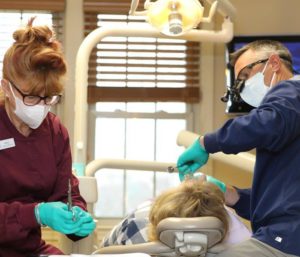Valentine’s Day is a widely celebrated holiday in February, but there is another reason to be thinking about your heart. This month is Heart Health Month. There is no better time for you to learn about how your cardiovascular and oral healthy are related. In order to keep your heart strong, you should be focusing on your oral hygiene routine. Continue reading to learn about their connection.
February 27, 2021
February 22, 2021

This is a phrase we hear far too frequently when patients call to cancel or change their dental hygiene appointments. When the patient is told that there are no open hygiene appointments for 4-6 months, the response is often, “Oh, that’s okay, it’s just a cleaning.” This lack of concern is only partly to blame on the patient; most of the accountability falls in the lap of the dental team.
If you read this column with any frequency, I am sure you have seen me report that 75% of the population has some form of periodontal (gum) disease. I’m sure you have also read that periodontal disease has been linked to heart disease, stroke, pre-term,… (Read More)
February 17, 2021
“There’s not enough time in the day.” Have you ever used this excuse? I said it yesterday to someone. We all tend to waste a lot of time, or at least don’t use the time we have as effectively as we could. You would think that in our technology-filled world, time management would be easier. I think that some of this technology gets in the way by adding even more of a time commitment to things that reduce interpersonal communication.
Here’s an example. It’s time to buy a new… (Read More)
February 8, 2021

Patients see things differently than dentists. Often, what is important to dentists is not important to patients, and vice versa. This seems like the obvious, but dentists often have a blind spot when it comes to seeing things from a patient’s viewpoint.
We often have a similar blind spot in our ability to communicate with patients. When asked to rate their ability to communicate with patients, 60% of physicians rated themselves in the top 10%.
Dentists would probably have similar results.
Communication is key to any relationship. Why then do healthcare professionals, dentists specifically, often have poor communication skills with their patients? There is no one answer to this question, but we (dentists) all struggle… (Read More)
February 1, 2021

You may have heard your dental hygienist tell you to brush and floss more, but what about chewing more gum?
In a study published in PLOS One, researchers found that chewing gum may remove as much bacteria as brushing without toothpaste or flossing. The study was funded by Wrigley……ok, but it’s still interesting.
“This study was initiated as a method development study to determine the number of bacteria that are trapped in a piece of sugar-free gum,” said one of the authors. “According to our knowledge, this is the first time that an estimate of the number of bacteria trapped in a piece of chewed gum is determined.”
For their research, Wessel and colleagues included… (Read More)
